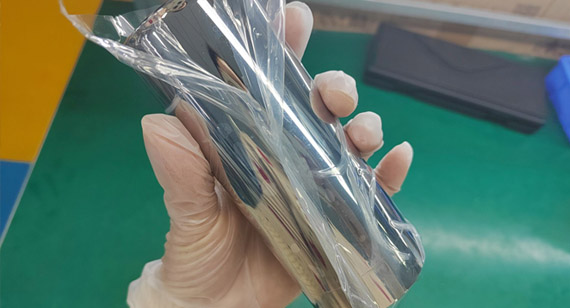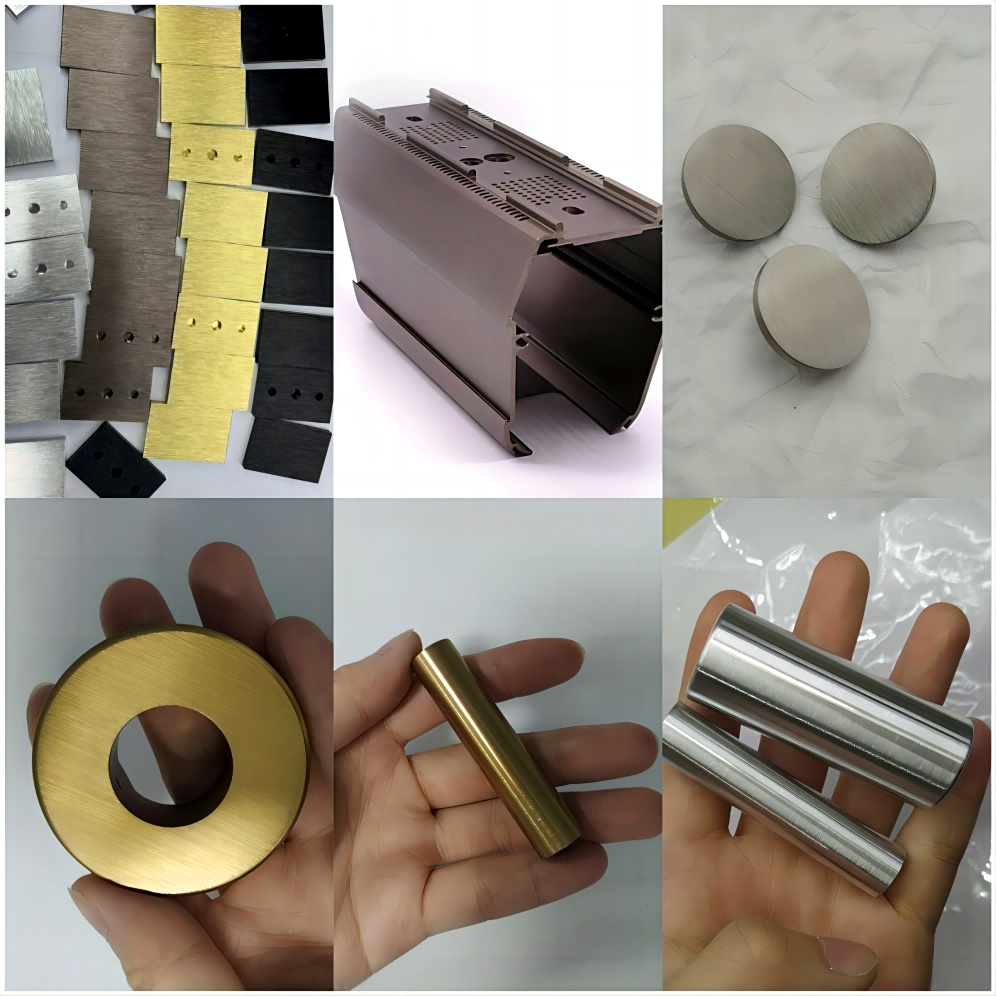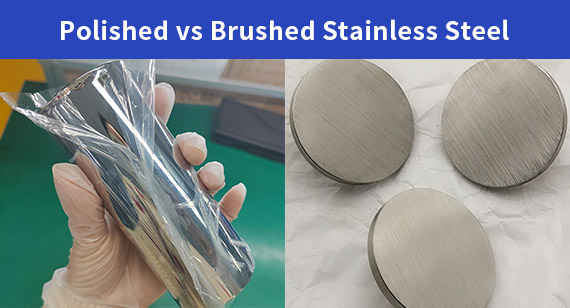15 years one-stop China custom CNC machining parts factory

Hey there I’m VMT Sam!
With 25 years of CNC machining experience we are committed to helping clients overcome 10000 complex part-processing challenges all to contribute to a better life through intelligent manufacturing. Contact us now
 1081 |
Published by VMT at Jul 16 2024
1081 |
Published by VMT at Jul 16 2024
Overview
In the field of stainless steel CNC machining manufacturing, polishing and brushing are two commonly used surface treatment techniques. These techniques impart distinct visual and performance characteristics to stainless steel products. Polished stainless steel is renowned for its mirror-like finish and high smoothness, while brushed stainless steel is appreciated for its unique texture and anti-slip properties. This article aims to explore the characteristics, differences, advantages, and disadvantages of polished and brushed stainless steel, as well as their applicability in different scenarios, helping readers make informed decisions in their projects.
Polished stainless steel refers to stainless steel that has undergone physical or chemical methods to remove surface roughness, achieving a smooth, mirror-like finish. This process typically involves several steps, including rough grinding, fine grinding, and polishing, ultimately resulting in a highly glossy and smooth surface. Polished stainless steel is not only aesthetically pleasing but also effectively resists stains and fingerprints, making it a popular choice for high-end appliances, jewelry, medical devices, and other applications requiring a pristine appearance.

Brushed stainless steel, on the other hand, involves creating continuous, parallel lines or fine streaks on the surface of stainless steel through mechanical or chemical means. This texture enhances the visual appeal of the stainless steel and improves its anti-slip and wear-resistant properties. Brushed treatment typically uses tools such as brushing wheels or abrasive belts. By controlling the brushing force and direction, different textures and densities can be achieved. Brushed stainless steel is widely used in architectural decoration, furniture manufacturing, and electronic device housings.

Differences Comparison
Surface Texture: Polished stainless steel has a smooth, mirror-like surface with no visible texture, while brushed stainless steel has a fine, linear texture that provides a unique visual effect.

Glossiness: Polished stainless steel has a very high glossiness and can reflect the surrounding environment's image, whereas brushed stainless steel has a softer gloss that is not overly bright.
Wear Resistance: Both have good wear resistance, but the specific performance depends on factors like material thickness and treatment process. Generally, polished stainless steel surfaces are more prone to scratches, while brushed stainless steel textures can somewhat conceal scratches.
Fingerprint Resistance: Polished stainless steel surfaces are smooth and easily show fingerprints and smudges, whereas brushed stainless steel textures disperse fingerprints and smudges, offering better fingerprint resistance.
Maintenance: Polished stainless steel requires regular cleaning to maintain its glossiness and is more selective with cleaning agents, whereas brushed stainless steel is easier to maintain with simple daily cleaning.
Processing Cost: Polished stainless steel generally has higher processing costs than brushed stainless steel due to the time and materials consumed in the polishing process.
Applications: Polished stainless steel is better suited for applications requiring high reflectivity and aesthetics, such as jewelry and high-end tableware. Brushed stainless steel is more suitable for applications requiring anti-slip, wear resistance, and durability, such as kitchen equipment and industrial devices.
| Comparison Basics | Polished Stainless Steel | Brushed Stainless Steel |
| What are they | A type of stainless steel with a bright finish. | A metal with a dull surface due to friction. |
| Applications | Suitable for situations where the appearance is high and not too difficult. | Useful for difficult situations where you need to increase surface friction while still looking nice and textured. |
| Corrosion | Low | High |
| Gloss | High | Low |
| Surface | Smooth | Rough |
| Cleaning | Simple | Difficult |
Polished Stainless Steel
Advantages:
High glossiness and aesthetically pleasing.
Strong corrosion resistance and durability.
Easy to clean and maintain hygiene.
Disadvantages:
Surface is prone to scratches, with high maintenance costs.
Fingerprints and smudges are noticeable, requiring frequent cleaning.
Brushed Stainless Steel
Advantages:
Unique texture that enhances visual appeal.
Good anti-slip properties, improving safety.
Strong wear resistance, extending service life.
Better fingerprint resistance and easier maintenance.
Disadvantages:
Lower glossiness, not as striking as polished stainless steel.
Though cheaper than polishing, still requires professional equipment and skills.
In practice, both polished and brushed stainless steel have their merits. The better choice depends on the specific application and requirements. If high reflectivity and aesthetics are needed, polished stainless steel is preferable. If anti-slip, wear resistance, and practicality are prioritized, brushed stainless steel is more suitable. Thus, when choosing, consider the product's functional needs, design style, and budget.
As experts in CNC machining and manufacturing, we understand the importance of polishing and brushing techniques for stainless steel products. We have advanced CNC machining equipment and a professional technical team to provide customers with one-stop services from design consultation, material selection, and process planning to finished product delivery. Whether you need polished stainless steel CNC machined parts or brushed stainless steel CNC machined parts, we can meet your needs and ensure high-quality, timely delivery.

Polishing and brushing are two essential surface treatment techniques in stainless steel processing, each with unique advantages and applicable scenarios. By understanding the characteristics, differences, advantages, and applications of polished and brushed stainless steel, you can make more informed choices for your projects. Partnering with a professional CNC machining factory can help achieve perfect project presentation and enhance customer satisfaction.
What is the difference between brushing and polishing?
Brushed stainless steel has continuous, parallel fine lines that enhance visual appeal and anti-slip properties, while polished stainless steel has a smooth, mirror-like surface with high glossiness and corrosion resistance.
How to prevent brushed steel from rusting?
Keeping the brushed steel surface dry and clean, avoiding prolonged exposure to humid or corrosive environments, and using rust inhibitors or coatings can enhance its corrosion resistance.
Why is brushed nickel more expensive?
Brushed nickel is more expensive due to the high cost and value of nickel as a precious metal, as well as the professional equipment and techniques required for brushing. Additionally, its superior wear resistance, corrosion resistance, and unique texture contribute to its higher price.
Is brushed stainless steel hard to clean?
Brushed stainless steel is not hard to clean; its texture helps disperse fingerprints and smudges, making cleaning easier. Generally, using mild detergents and soft cloths can easily remove surface dirt and fingerprints. However, avoid using strong acids, alkalis, or abrasive cleaners to prevent surface damage.
What is the difference between brushed steel and regular steel?
Brushed steel is regular steel that has undergone brushing treatment, imparting unique texture effects and performance characteristics. Regular steel encompasses a broad range of types, including stainless steel, carbon steel, and alloy steel. Brushing adds distinctive differences in appearance, feel, and function compared to untreated steel.
Does brushed steel show fingerprints?
Brushed steel may show fingerprints, but its texture helps disperse them, making fingerprints less noticeable and easier to remove compared to polished stainless steel. For frequently touched surfaces, brushed steel can be a more suitable choice.
Does brushed metal rust?
Whether brushed metal rusts depends on its material and treatment. Brushed stainless steel, for instance, has a dense oxide layer (passivation layer) due to chromium and other alloying elements, providing excellent corrosion resistance and reducing rust susceptibility. However, prolonged exposure to harsh environments or severe surface damage can lead to corrosion and rust. Proper maintenance and care can extend the service life and preserve the appearance of brushed metal products.
In summary, polished and brushed stainless steel each have their place in the stainless steel processing field. The choice of surface treatment should be based on specific needs and application scenarios. Proper maintenance and care can prolong the service life and maintain the excellent appearance of stainless steel products. This article aims to provide valuable information and reference for readers.
Ready To Start Your Next Project?
Get Instant Quote

Request a Free Quote
Send us a message if you have any questions or request a quote. We will get back to you ASAP!